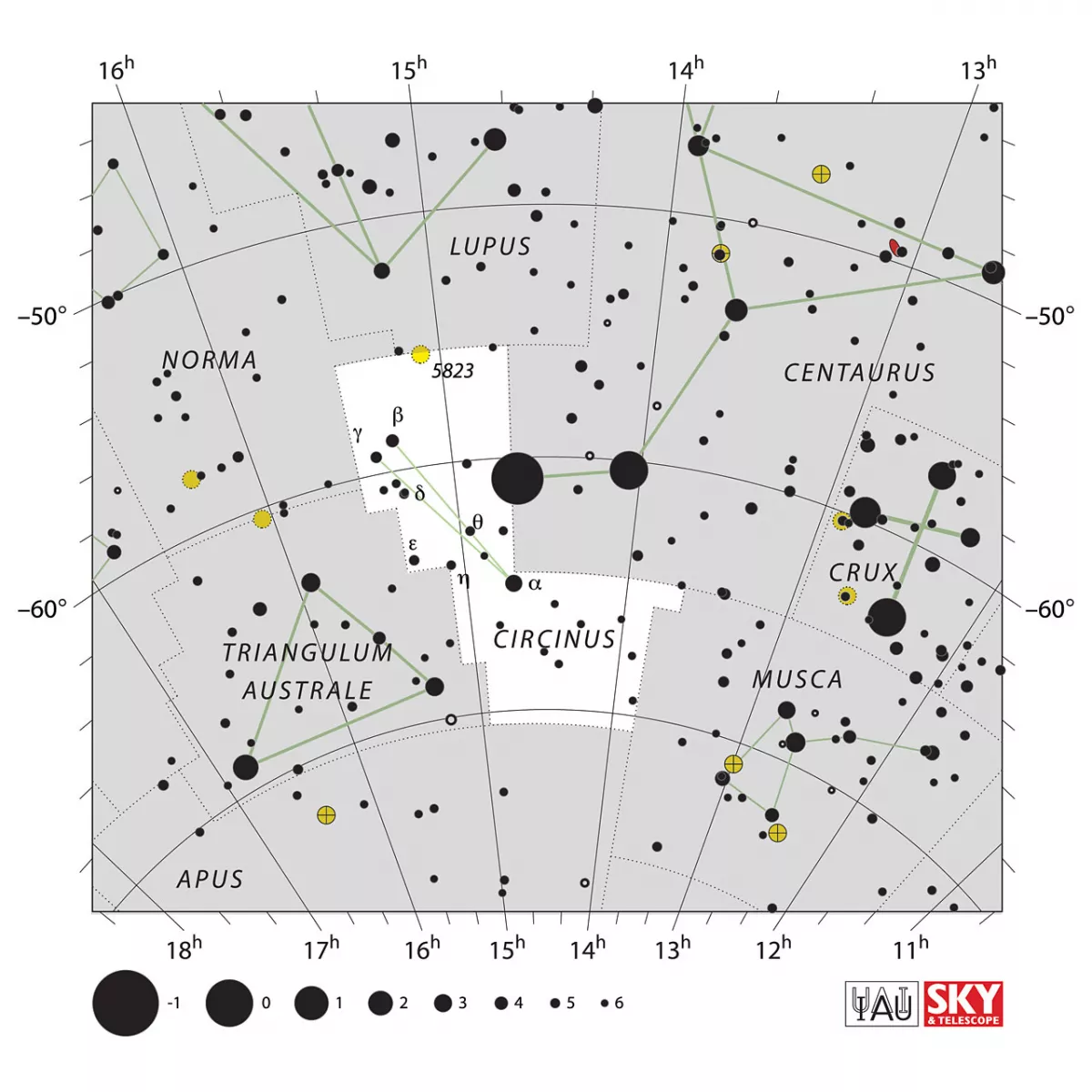Constellation Circinus (Compass)

Properties
The constellation Circinus, which is very small at 93 square degrees, is located east of the star Rigil Centaurus. It is roughly similar to the Triangulum constellation in the northern sky, because with its three brightest stars alpha, beta and gamma (3rd to 4th size) it forms a similarly narrow, pointed triangle that is supposed to represent a slightly spread circle. At least it is in the Milky Way and therefore still contains a few star clusters. The constellation culminates around midnight on May 1st. [9, 15]
| IAU Name | Circinus |
| IAU Genitive | Circini |
| IAU Abbr. | Cir |
| English Name | Compass |
| Culmination at local midnight | 8 May |
| Season (Latitude +0.0°) | January … October |
| Right Ascension (J2000.0) | 13h 38m 43s … 15h 30m 22s |
| Declination (J2000.0) | -70° 37' 28" … -55° 26' 11" |
| Area | 93 deg2 |
| Neighbours (N↻) | Lup, Cen, Mus, Aps, TrA, Nor |
Deep-Sky Object Descriptions
Catalogues
History
This inconspicuous constellation was introduced in 1752 by the French astronomer Lacaille. It represents a circle of drawings and, together with Norma (angle measure), is intended to remind of the navigational aids used by seafarers. [7]
Abbé Nicolas Louis de Lacaille was born in Rumigny, France, in 1713. Until 1739 he taught mathematics at the Mazarin College in Paris. In 1750 he traveled to the Cape of Good Hope in South Africa and introduced 14 new constellations, mostly taking apart old and larger ones. He also made important measurements on the moon, Venus and Mars and cataloged around 10,000 stars. On his return to Paris he revised his data - a process in which he was surprised by his death in 1762. His Coelum Australe Stelliferum was published the following year. [133]